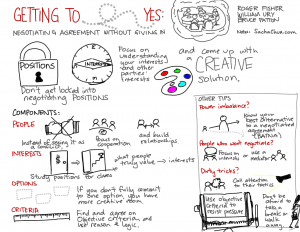I hear from many leaders that a key to good leadership is asking questions. I find this advice worthwhile in and of itself, since many want-to-be-leaders tend to talk more than listen. I also desire more. I want advice that is more to be actionable. So I have set about gathering advice on just what questions to ask.
Gary Cohen wrote the book, “Just Ask Leadership” that explains how to execute question-based leadership. In an Ivey Business Journal article, Cohen gives the rationale for leading by asking questions, “In the 21st century, it’s not possible for leaders to be know-it-alls, nor is it in their or the organization’s best interest to try. Leaders need to ask questions that move others to action and answers. The employees that work for you today either know more than you do about their job or at least they should know more than you. As you move up the ranks of an organization or migrate up the ranks by job transfer, you will end up leading people that do things you cannot possibly understand. Rather than using a conventional way of getting up to speed, say reading extensively, leaders should use questions to increase others’ alignment, engagement, and accountability.”
Cohen outlines four styles for asking questions including the value of the style and when to use it. He also gives sample questions for each style. This table gives partial descriptions of styles and sample questions.
| Professor |
Judge |
Innovator |
Director |
| Focus on knowledge, gaining perspective, current time |
Focus on knowledge, evaluating, current time |
Focus on action, gaining perspective, in the future |
Focus on action, evaluating, in the future |
| What is the goal?
What are your options?
What are the alternative choices?
What is the current reality? |
Whose decision is it?
What is the most important consideration?
What are the consequences of the choices? |
What would you do if time and funds were limited?
How could I support moving forward?
What is holding you back from the decision? |
When is the decision due?
Do you understand the key drivers of the outcome for the situation?
What needs to happen for that to succeed? |
My favorites are: What would you do if time and funds were limited? How could I support moving forward?
My preference here shows my Silicon Valley bias of innovation leadership.
Six Questions Every Leader Should be Asking from Evan Owens of Centresource, an interactive marketing agency:
Which gauges should we be watching?
Where are we manufacturing energy?
Who needs to be sitting at the table?
Who is not keeping up?
Where do I make the greatest contribution?
What should I stop doing?
My favorite is: Who needs to be sitting at the table?
I have been in meetings where, after an hour of discussion, it becomes apparent that the decision maker or responsible person in not even in the room. Asking this question up front saves valuable time.
For a long list of leadership questions, see Kimberly Gleason’s recent executive and leadership blog 35 Empowering Questions Leaders Ask.
My favorite is: What should be the measures of success for this plan/project/idea?
If success is not defined, you don’t know if or when it has been reached. Asking this question as a leader makes success possible for others.
I discovered a presentation from Margie Hagene, posted on University of Michigan Health Systems Leadership Reference wiki, How to Lead by Asking Effective Questions given on June 8, 2012. Sourcing Edgar Schein, Helping, Margie compares helpful vs. unhelpful questions. Helpful questions keep the ownership of the problem with the person and don’t give the ownership to the leader.

My favorite is: How would you describe what’s happening vs. what should be happening?
What I like about this question is the comparison. It prompts people to compare the status quo with the ideal and, therefore, highlights the difference.
Speaking of Edgar Schein, watch this Helping video to hear his ideas on why and how leaders need to be changing their competencies and helping others. He defines help as giving someone the ability to do something they cannot do for themselves. That means you can’t tell someone how to do something they already know how to do. Of course, that requires asking the right questions.
Finally, Michael Hyatt’s Intentional Leadership blog “7 Suggestions for Asking More Powerful Questions” gives advice on how to ask good questions. He suggests the questions need to be open-ended, get behind the assumptions, and get both sides of the story. He suggests the leader asks follow-up questions, gets comfortable with ‘dead air’, helps people discover their own insights, and understands the difference between facts and speculation.
My favorite is: Get comfortable with ‘dead air’
It is always amazing to me how people feel compelled to fill dead air with talking. There is power in silence. Silence shows respect for others. It gives others the chance to think and articulate their answers.
In summary, not only do leaders need to ask questions, they need to ask the right questions for the situation in the right manner. Not an easy communication task. Not something you can learn how to do on the Internet. But, you can gather information as I have done here and then put it to practice in your own leadership situation. Personally, I will start with the following questions.
Who needs to be sitting at the table?
How would you describe what’s happening vs. what should be happening?
What should be the measures of success for this plan/project/idea?
What would you do if time and funds were limited?
How could I support moving forward?
And of course, I will pause and wait patiently in the ‘dead air’ for answers.
P.S. Dilbert is always good for a counter example.




